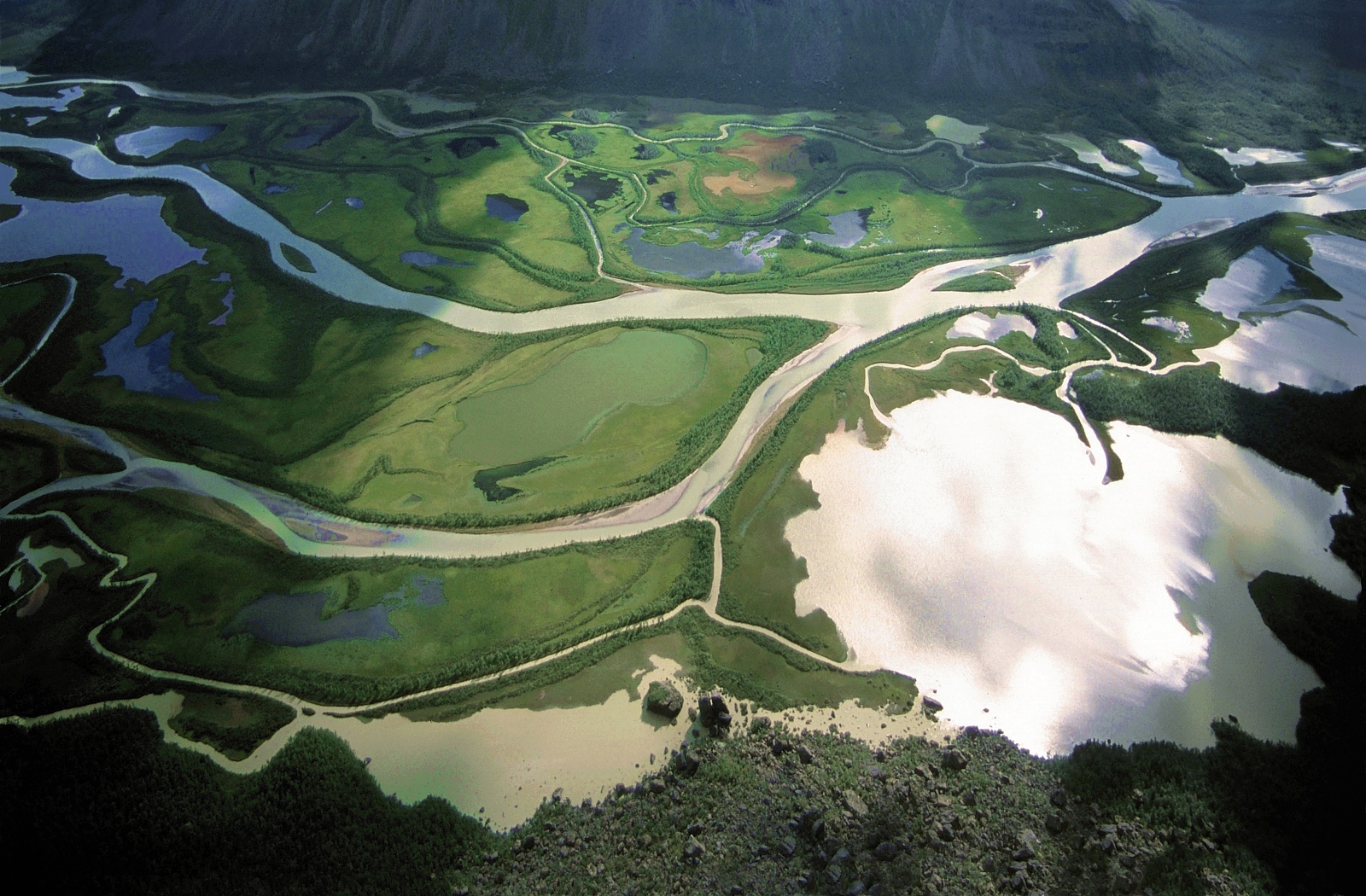In a
previous post I outlined an idea for hiking fast and light in order to see the Rapa valley in Sarek national park in under a week. It is still very much an open question if I will find the time for such a trip the nearest years, but planning for it is a pleasure in itself. If I can inspire anyone to do a reconnaissance trip before me that would also be great. One of the most important aspects of the trip is the route planning. For this purpose I have put up a
google map and will now discuss some of the choices.
Start point
There are basically two starting points for getting into Sarek and the Rapa valley by public transport: Saltoloukta and Kvikkjokk. I'm leaning towards Saltoloukta as the trail from Saltoloukta to Sitojaure is mostly flat and the scenery is nice, whereas the trail from Kvikkjokk to the Pårte-hut is mostly in the forest.
The midpoint goal
My goal is to see "Rapaselet" (A "Sel" is a stretch of calm water between streams.) and the Rapa-delta. These places are reputed to be among the most beautiful places in Sweden (Even in the world, many would argue.).
The Rapa-delta near Aktse (Source: Creative Commons, M, kluber fotografie)
The Rapa-sel (Source: Creative Commons, photographer unknown.)
The best point for views of the delta is most probably the Skierffe-cliff. From where to view the Rapa-sel is a more difficult question, it depends a bit on how far one can go, but a first stop could be Hill 1112. If one has a bit more time the best place to camp according to the mountain-god, Claes Grundsten, is above the "reindeer-herder hut" on Vassjalåpptå.
Walking plan
If one wants to use a really ultralight shelter, which I want, campsite selection becomes more important. It should not be too exposed to the wind. A site among in the birch-forest is preferable if the weather is windy. This can be difficult to arrange for this trip though.
Day 1: Saltoloukta - Sitojaure. Good camping can be found next to the hut. 20km from Saltoloukta is probably far enough for the first evening, even when runnning. Most probably it will be too late to get across Sitojaure this day.
Day 2: Sitojaure -(By boat) - Svine - Skierffe - Vassjalåpptå. This will be one hell of a day. The distance will probably be around 24km and this mostly bushwacking in unknown terrain. From my personal experience I often do not tend to walk faster than 2km/h in such circumstances. This translates into 12 hours of walking. Running will most likely be difficult on this stretch. During summer it doesn't really get that dark though, so you can walk well into the night.
Day 3: Vassjalåpptå - Skierffe. 12km. A cool day for taking in the sights.
Day 4: Skierffe - Svine - Saltoloukta. A 31km day, but this time on well-beaten paths.
Day 5. Reserved for unexpected (mis)happenings.
Day 6 Travel home.
An alternative on day 2 is to arrange for the boat to drop you off approximately 3km east of Rinim, instead of Svine (Thanks again to Claes Grundsten for this personal tip). This will reduce the distance to around 12km, but the climb up from Sitojaure to Vassjavagge will be steep. At it's steepest it will be about 500m in a km. It would be nice to hear if anyone has any more experience of this area. This choice will also allow for taking a different route on the way back to Svine.
Calle enjoying the fantastic scenery during the boat-trip back from Rinim to the Sitojaure hut. In the background you see Namadis which is hiding the entrance to Basstavagge where we came from.















